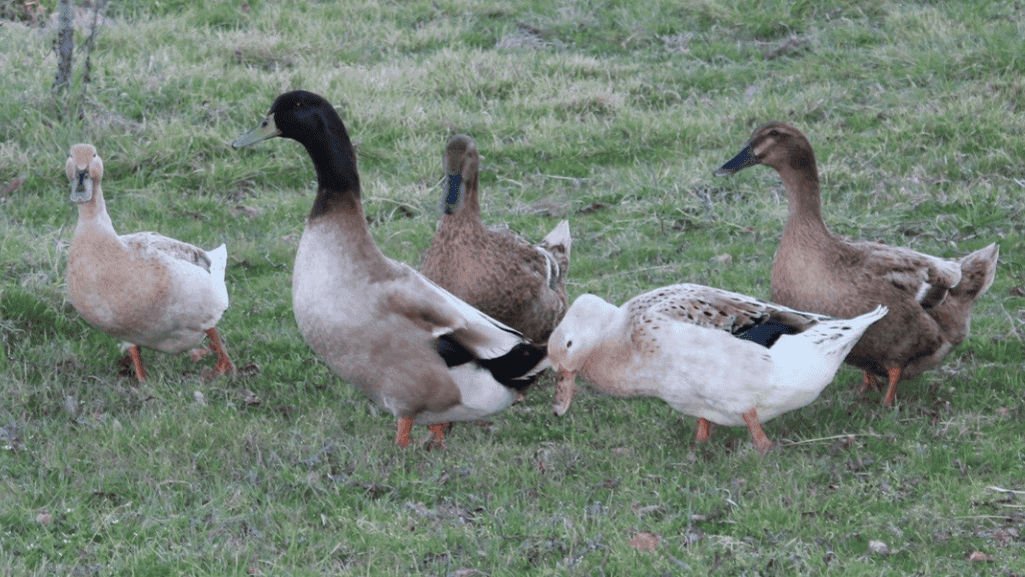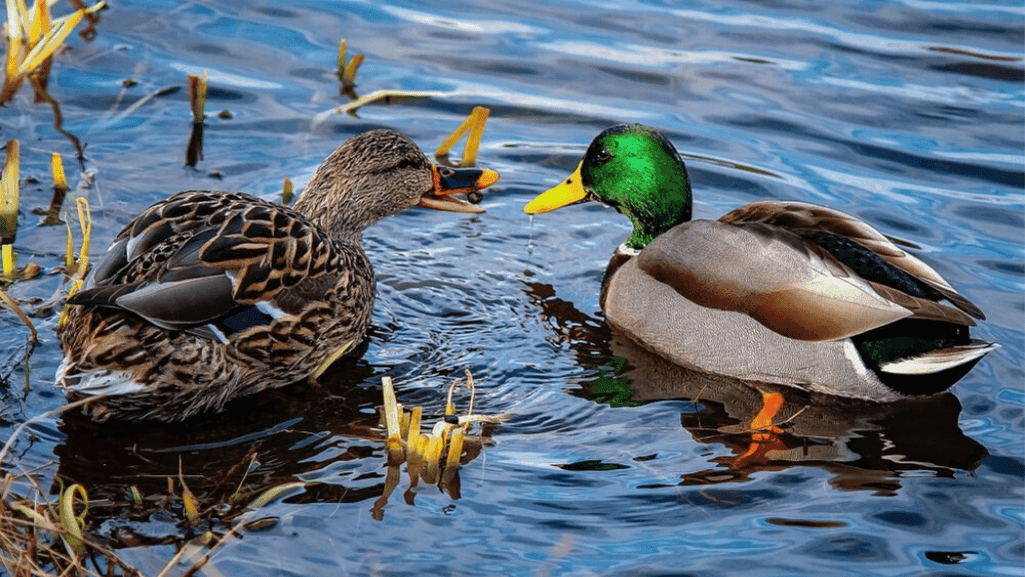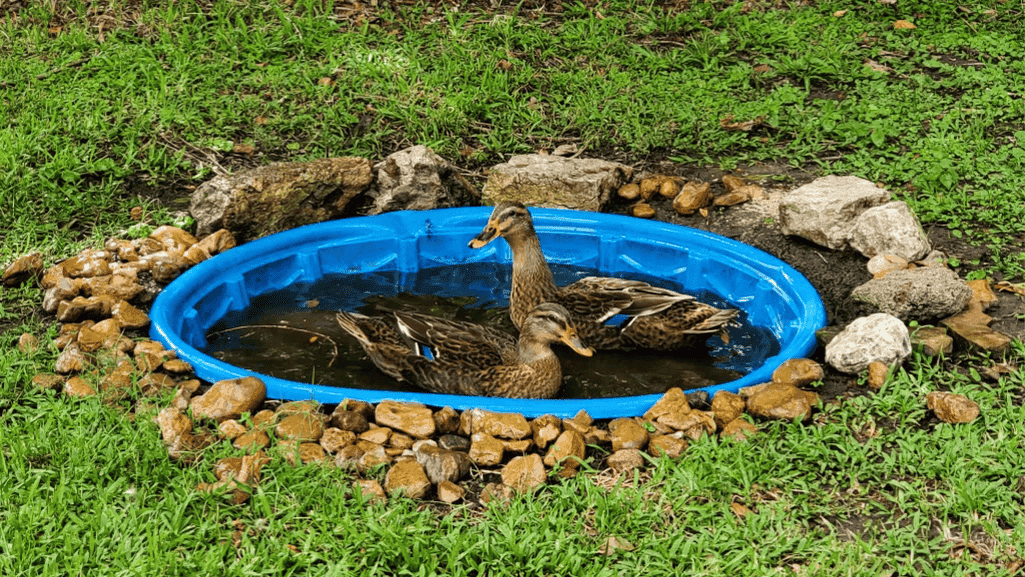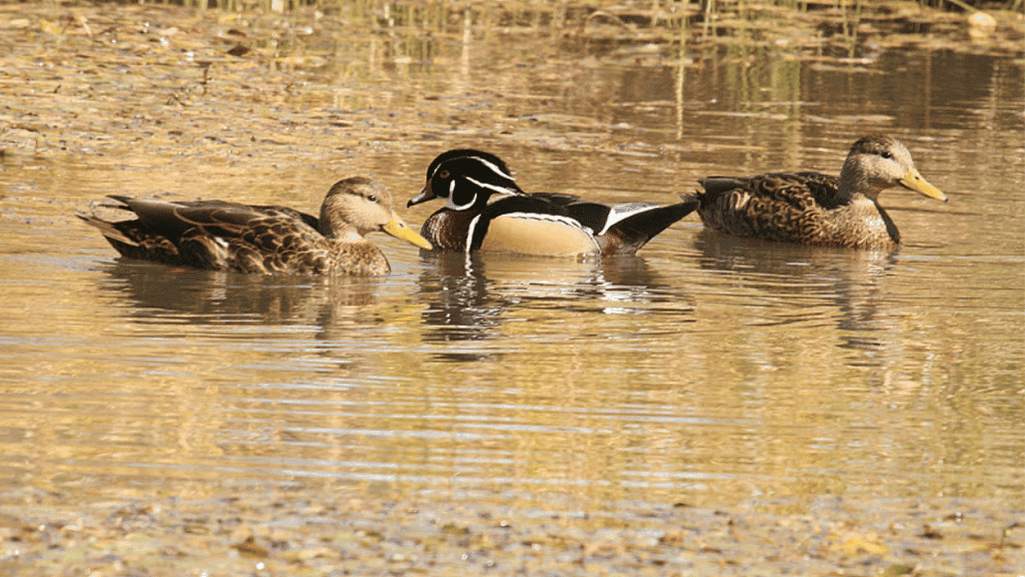Imagine turning your backyard into a peaceful retreat. The sound of water and ducks quacking fills the air. By making a duck pond with a filter, you create a thriving space. It’s not just beautiful; it’s also a natural home for ducks and wildlife.
A filtration system in your pond keeps it healthy. It keeps the water clear, stops algae, and helps all living things in the pond. By using eco-friendly pond care, you avoid harsh chemicals. This makes your pond a self-sustaining haven.
Having a duck pond brings nature right to your backyard. Ducks add life with their swimming and foraging. Choose the right backyard duck breeds for a lively pond. Ducks like Pekin or Khaki Campbell make your outdoor space more charming.
Key Takeaways
- A duck pond with a filter creates a serene backyard oasis and supports a balanced aquatic ecosystem.
- Filtration systems help maintain water clarity, control algae growth, and promote the overall health of the pond.
- Sustainable pond maintenance practices minimize the need for chemical additives and create a self-sustaining environment.
- Ducks bring life and activity to the pond, enhancing the beauty and charm of your outdoor space.
- Choosing the right backyard duck breeds ensures a harmonious and thriving community within the pond.
Planning Your Duck Pond Oasis
Creating a serene duck pond oasis in your backyard is exciting. It needs careful planning and thought. To make your backyard duck habitat thrive, pick the right spot and size your pond well.
Choosing the Perfect Location
Look for a spot that gets plenty of sunlight all day. Ducks need sun and shade to stay healthy. Make sure it fits well with your wildlife-friendly landscaping.
Make sure the area is level and safe from dangers like electrical lines. A good site is key for a successful duck pond.
Determining the Size and Depth of Your Pond
The pond’s size should match the number of ducks you’ll have. Aim for about 10 square feet of water per duck. This gives them room to swim and play.
For depth, aim for 2-3 feet to let ducks swim and dive. Having different depths is good. Shallow areas are great for dabbling, while deeper spots are for swimming.
Creating a well-planned duck pond oasis is a labor of love that rewards you with the joy of watching your ducks thrive in their natural habitat.
Remember, proper duck pond maintenance and pond water filtration are key. Good planning means a happy and enchanting backyard duck habitat for years.
Constructing Your Duck Pond
First, pick the perfect spot for your duck pond. Then, decide on its size and depth. Building a duck pond needs careful planning to keep it healthy and sustainable. You can read more about it here.
Excavating and Lining the Pond
Start by digging the area to the size and depth you want. Make sure the weather is warm enough for digging. After digging, put a strong pond liner in to stop leaks and keep the water in.
Installing a Pond Filtration System
A good filtration system is key to keeping the water clean. It removes bad stuff and keeps the water clear. Adding pond aeration helps too. It makes the water better for your ducks and other fish.
A study found that a big backyard pond with ducks costs between $2,000 and $2,250. Without ducks, it’s about $1,500 to $2,000.
Adding Natural Elements and Aquatic Plants
Add rocks, gravel, and sand to make your pond look natural. These things give your ducks fun things to do. Also, put in plants like water lilies and duckweed.
These plants make your pond look good and help keep it clean. They also give your ducks food and shelter.
When picking plants and accessories, remember:
- Choose plants that are safe for ducks to eat
- Use a mix of plants to create a good aquatic habitat
- Get plants that help clean the water
- Make sure accessories are safe and won’t slip
By following these tips, you’ll have a beautiful and healthy duck pond. It will be great for your ducks and the environment.
Maintaining a Healthy Duck Pond with Filter
Keeping your duck pond clean is key for a thriving wetland. Regular maintenance and the right equipment can turn your outdoor duck enclosure into a beautiful natural swimming pool. It becomes a sanctuary for waterfowl.
Regular Cleaning and Debris Removal
To keep your pond clean, remove debris like leaves and twigs daily. Use a skimmer net to take out floating debris. Installing a pond skimmer helps remove surface debris continuously. Cleaning your pond regularly prevents organic matter buildup, which can harm water quality and cause algae.
Monitoring Water Quality and Chemistry
Testing your pond water regularly is vital for a healthy environment. The ideal pH level for a duck pond is between 6.5 and 9.0. Use a water testing kit to check ammonia, nitrate, and nitrite levels monthly. If levels are too high, change some water and adjust your filtration system.
To balance water chemistry and prevent algae, add barley straw to your pond. It releases compounds that stop algae growth, making it a natural and eco-friendly solution for clear water.
Maintaining the Filtration System
A good filtration system is essential for a clean and healthy pond. Clean and maintain your pond filter as the manufacturer suggests. This might include cleaning the filter media, backwashing the system, or replacing parts.
Choose a filtration system with both mechanical and biological filtration. Mechanical filtration removes solid waste and debris. Biological filtration uses beneficial bacteria to break down harmful substances like ammonia and nitrites.
A well-maintained filtration system, along with regular cleaning and water quality checks, keeps your duck pond a beautiful and healthy home for your feathered friends.
Enhancing Your Duck Pond with Filter
After building your duck pond and setting up a water filtering system, it’s time to make it better for your ducks. A natural habitat that feels like their wild home is key. This will help them stay healthy and happy.
Creating a Natural Habitat for Ducks
To make your pond a wildlife-friendly spot, add rocks, logs, and sticks around it. These features give your ducks places to hide and make the pond feel more natural. Make sure there are shallow spots for easy getting in and out. Ducks need at least 18 inches of water to swim comfortably.
Planting native plants around the pond is also a great idea. It looks nice and brings in insects and other animals, making the ecosystem lively. Plus, water lilies can stop too much algae by blocking sunlight, keeping your self-cleaning pond clear.
Incorporating Water Features and Decorative Elements
Adding fountains or waterfalls can make your pond look better and help the water flow. These features make the pond sound soothing and keep the water clean by adding oxygen and preventing it from getting still.
By adding water features and decorations, you can turn your duck pond into a peaceful place for both you and your ducks to enjoy.
Using stones or gravel around the pond can also make it look nicer. These materials not only look good but also help keep the pond’s edge stable. They prevent erosion and give your ducks a safe path to walk on.
Lastly, make sure your ducks have a place to hide and rest. A small coop or nesting box near the pond is perfect. It gives them a safe spot to rest and lay eggs, close to the water. With these additions, you’ll have a welcoming space that supports your ducks’ health and happiness.
Conclusion
Creating a waterfowl-friendly pond is a rewarding project that helps both you and the environment. By choosing the right spot, size, and depth, you can make a home for up to 4 ducks. Use eco-friendly filters and natural methods like water lilies to keep the water clean.
Keeping your pond healthy is crucial. Our design lets you go a month without changing filters, keeping the water clear. Cleaning the filters takes only 15 minutes. Adding aeration and beneficial bacteria also improves water quality in your 350-gallon pond.
Adding natural elements like mussels and snails helps keep the pond clean. When needed, use safe water treatments to remove harmful bacteria. Regular water tests and a 24-foot drainage system ensure a clean and welcoming space for ducks and people.
Start this journey to create a peaceful backyard oasis. Your duck pond will become a haven for wildlife and a joy for you and your family.











